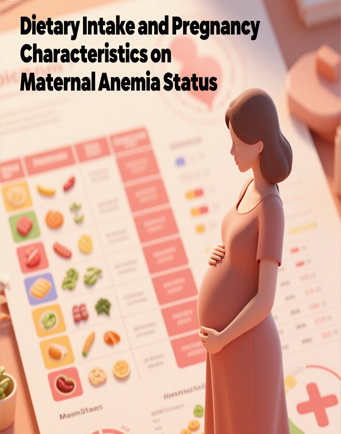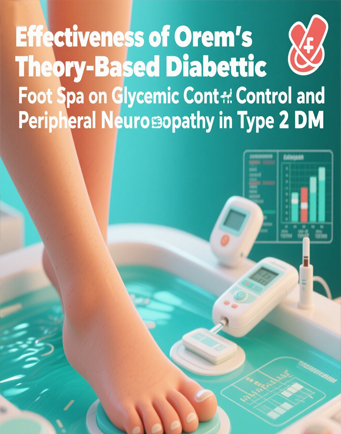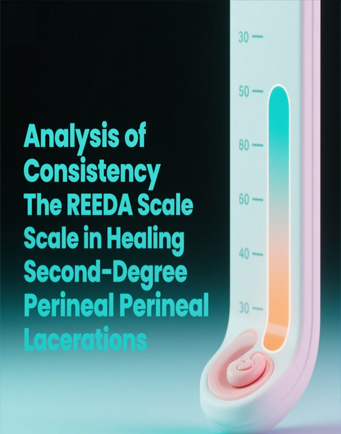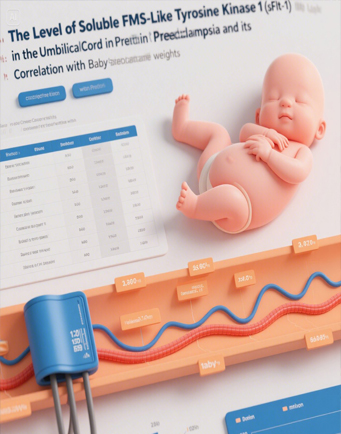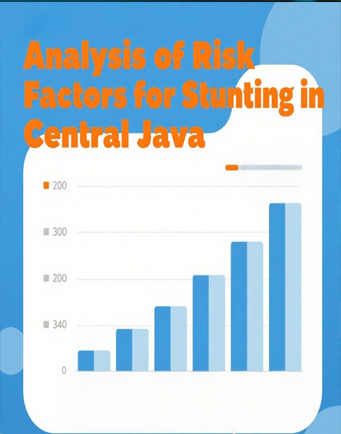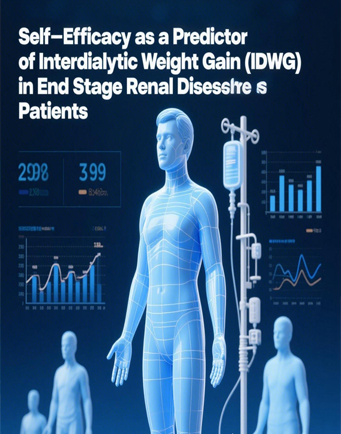The Hospital Characteristics (Public and Private) Utilization by Caesarean Section Delivery in Thailand

Downloads
Cesarean delivery (C-section) rates continue to rise worldwide, with Thailand showing a significant spike in the past two decades, surpassing WHO recommended rates. Hospital characteristics, such as ownership, financial incentives, and medical staffing patterns, can influence cesarean delivery rates. Private hospitals may be more susceptible to non-medical motivations, while public hospitals often face high patient volumes and resource constraints. This study aimed to investigate the use of cesarean delivery in relation to hospital characteristics, with a comparative focus between public and private hospitals in Thailand. This study used a cross-sectional quantitative approach with secondary data from the Thailand Multi Indicator Survey (MICS) 2022. The study sample consisted of 1,046 women who delivered by cesarean section and 1,720 women who did not, with the dependent variable being hospital utilization by caesarean section delivery. Data analysis was performed using univariate, bivariate (Chi-square test), and multivariate (binary logistic regression) tests to analyze the effect of independent variables on the choice of hospital type. The study findings were that in women undergoing cesarean section, wealth and region of residence were significantly associated with private hospital utilization, with women from the fourth wealth quintile (OR = 14.61; 95% CI: 1.88–113.85) and the richest (OR = 23.67; 95% CI: 3.03–185.09) more likely to use private hospitals than the poorest, while those living outside Bangkok were less likely. In women without cesarean section, living in rural areas (OR = 0.36; 95% CI: 0.16–0.81) and outside Bangkok also significantly decreased the odds of private hospital utilization.
Akhter, S., Dasvarma, G. L., & Saikia, U. (2020). Reluctance of women of lower socio-economic status to use maternal healthcare services – Does only cost matter? PLOS ONE, 15(9), e0239597. https://doi.org/10.1371/journal.pone.0239597
Betran, A. P., Ye, J., Moller, A.-B., Souza, J. P., & Zhang, J. (2021). Trends and projections of caesarean section rates: global and regional estimates. BMJ Global Health, 6(6), e005671. https://doi.org/10.1136/bmjgh-2021-005671
Bintabara, D., & Mwampagatwa, I. (2023). Socioeconomic inequalities in maternal healthcare utilization: An analysis of the interaction between wealth status and education, a population-based surveys in Tanzania. PLOS Global Public Health, 3(6), e0002006. https://doi.org/10.1371/journal.pgph.0002006
Dalinjong, P. A., Wang, A. Y., & Homer, C. S. E. (2018). Are health facilities well equipped to provide basic quality childbirth services under the free maternal health policy? Findings from rural Northern Ghana. BMC Health Services Research, 18(1), 959. https://doi.org/10.1186/s12913-018-3787-1
Etcheverry, C., Betrán, A. P., de Loenzien, M., Kaboré, C., Lumbiganon, P., Carroli, G., Mac, Q. N. H., Gialdini, C., & Dumont, A. (2024). Women’s caesarean section preferences: A multicountry cross- sectional survey in low- and middle-income countries. Midwifery, 132, 103979. https://doi.org/10.1016/j.midw.2024.103979
Gehlert, S., & Ward, T. S. (2019). Theories of health behavior. Handbook of health social work. Wiley. https://doi.org/10.1002/9781119420743.ch7
Leerapan, B., Teekasap, P., Urwannachotima, N., Jaichuen, W., Chiangchaisakulthai, K., Udomaksorn, K., Meeyai, A., Noree, T., & Sawaengdee, K. (2021). System dynamics modelling of health workforce planning to address future challenges of Thailand’s Universal Health Coverage. Human Resources for Health, 19, 31. https://doi.org/10.1186/s12960-021-00572-5
Liabsuetrakul, T., Sukmanee, J., Thungthong, J., & Lumbiganon, P. (2019). Trend of Cesarean Section Rates and Correlations with Adverse Maternal and Neonatal Outcomes: A Secondary Analysis of Thai Universal Coverage Scheme Data. American Journal of Perinatology Reports, 09(04), e328–e336. https://doi.org/10.1055/s-0039-1697656
Long, Q., Kingdon, C., Yang, F., Renecle, M. D., Jahanfar, S., Bohren, M. A., & Betran, A. P. (2018). Prevalence of and reasons for women’s, family members’, and health professionals’ preferences for cesarean section in China: A mixed-methods systematic review. PLOS Medicine, 15(10), e1002672. https://doi.org/10.1371/journal.pmed.1002672
McCall, S. J., Semaan, A., Altijani, N., Opondo, C., Abdel-Fattah, M., & Kabakian-Khasholian, T. (2021). Trends, wealth inequalities and the role of the private sector in caesarean section in the Middle East and North Africa: A repeat cross-sectional analysis of population-based surveys. Plos One, 16(11), e0259791. https://doi.org/10.1371/journal.pone.0259791
Metwali, N. Y., Ahmed, R. A., Timraz, J. H., Irfan, H., Makarfi, S. M., Metwali, M. Y., ... & Fadl, J. (2024). Evidence-Based Strategies to Minimize Unnecessary Primary Cesarean Sections: A Comprehensive Review. Cureus, 16(11), e74729. https://doi.org/10.7759/cureus.74729
Nuampa, S., Ratinthorn, A., Lumbiganon, P., Rungreangkulkij, S., Rujiraprasert, N., Buaboon, N., ... & Betrán, A. P. (2023). “Because it eases my Childbirth Plan”: a qualitative study on factors contributing to preferences for caesarean section in Thailand. BMC pregnancy and childbirth, 23(1), 280. https://doi.org/10.1186/s12884-023-05576-8
Opiyo, N., Young, C., Requejo, J. H., Erdman, J., Bales, S., & Betrán, A. P. (2020). Reducing unnecessary caesarean sections: scoping review of financial and regulatory interventions. Reproductive Health, 17(1), 133. https://doi.org/10.1186/s12978-020-00983-y
Pan, J., Zhao, H., Wang, X., & Shi, X. (2016). Assessing spatial access to public and private hospitals in Sichuan, China: The influence of the private sector on the healthcare geography in China. Social Science & Medicine, 170, 35–45. https://doi.org/10.1016/j.socscimed.2016.09.042
Patamasingh Na Ayudhaya, O., Kittikraisak, W., Phadungkiatwatana, P., Hunt, D. R., Tomyabatra, K., Chotpitayasunondh, T., ... & Mott, J. A. (2024). Evaluation of cesarean delivery rates and factors associated with cesarean delivery among women enrolled in a pregnancy cohort study at two tertiary hospitals in Thailand. BMC Pregnancy and Childbirth, 24(1), 149. https://doi.org/10.1186/s12884-024-06314-4
Raghunathan, K., East, C., & Poudel, K. (2024). Barriers and enablers for implementation of clinical practice guidelines in maternity and neonatal settings: A rapid review. Plos One, 19(12), e0315588. https://doi.org/10.1371/journal.pone.0315588
Rydahl, E., Declercq, E., Juhl, M., & Maimburg, R. D. (2019). Cesarean section on a rise—Does advanced maternal age explain the increase? A population register-based study. Plos One, 14(1), e0210655. https://doi.org/10.1371/journal.pone.0210655
Sandall, J., Tribe, R. M., Avery, L., Mola, G., Visser, G. H., Homer, C. S., ... & Temmerman, M. (2018). Short-term and long-term effects of caesarean section on the health of women and children. The Lancet, 392(10155), 1349-1357. https://doi.org/10.1016/S0140-6736(18)31930-5
Soraya, S., Syamanta, T., Harahap, H. S. R. B., Coovadia, C., & Greg, M. (2023). Impact of the National Health Insurance Program (JKN) on Access to Public Health Services: A Comprehensive Analysis. Jurnal Ilmu Pendidikan Dan Humaniora, 12(3), 133–151. https://doi.org/10.35335/jiph.v12i3.7
Tangcharoensathien, V., Witthayapipopsakul, W., Panichkriangkrai, W., Patcharanarumol, W., & Mills, A. (2018). Health systems development in Thailand: a solid platform for successful implementation of universal health coverage. The Lancet, 391(10126), 1205–1223. https://doi.org/10.1016/S0140-6736(18)30198-3
Tatem, A. J., Campbell, J., Guerra-Arias, M., de Bernis, L., Moran, A., & Matthews, Z. (2014). Mapping for maternal and newborn health: the distributions of women of childbearing age, pregnancies and births. International Journal of Health Geographics, 13, 2. https://doi.org/10.1186/1476-072X-13-2
Vogel, J. P., Betrán, A. P., Vindevoghel, N., Souza, J. P., Torloni, M. R., Zhang, J., ... & Temmerman, M. (2015). Use of the Robson classification to assess caesarean section trends in 21 countries: a secondary analysis of two WHO multicountry surveys. The Lancet Global Health, 3(5), e260-e270. https://doi.org/10.1016/S2214-109X(15)70094-X
Wang, W., Maitland, E., Nicholas, S., Loban, E., & Haggerty, J. (2017). Comparison of patient perceived primary care quality in public clinics, public hospitals and private clinics in rural China. International Journal for Equity in Health, 16(1), 176. https://doi.org/10.1186/s12939-017-0672-1
Witthayapipopsakul, W., Viriyathorn, S., Rittimanomai, S., Van Der Meulen, J., Tangcharoensathien, V., Gurol-Urganci, I., & Mills, A. (2024). Health insurance schemes and their influences on healthcare variation in Asian countries: a realist review and theory’s testing in Thailand. International journal of health policy and management, 13, 7930. https://doi.org/10.34172/ijhpm.2024.7930
World Health Organization. (2015). WHO statement on caesarean section rates. World Health Organization. Retrieved from: https://www.who.int/publications/i/item/WHO-RHR-15.02
Yin, C., He, Q., Liu, Y., Chen, W., & Gao, Y. (2018). Inequality of public health and its role in spatial accessibility to medical facilities in China. Applied Geography, 92, 50–62. https://doi.org/10.1016/j.apgeog.2018.01.011
Yu, S., Fiebig, D. G., Viney, R., Scarf, V., & Homer, C. (2022). Private provider incentives in health care: The case of caesarean births. Social Science & Medicine, 294, 114729. https://doi.org/10.1016/j.socscimed.2022.114729
Yu, Y., Lin, F., Dong, W., Li, H., Zhang, X., & Chen, C. (2019). The effectiveness of financial intervention strategies for reducing caesarean section rates: a systematic review. BMC Public Health, 19(1), 1080. https://doi.org/10.1186/s12889-019-7265-4
Zehnati, A., Bousmah, M.-Q., & Abu-Zaineh, M. (2021). Public–private differentials in health care delivery: the case of cesarean deliveries in Algeria. International Journal of Health Economics and Management, 21(3), 367–385. https://doi.org/10.1007/s10754-021-09300-x
Copyright (c) 2025 JURNAL INFO KESEHATAN

This work is licensed under a Creative Commons Attribution-NonCommercial-ShareAlike 4.0 International License.
Copyright notice
Ownership of copyright
The copyright in this website and the material on this website (including without limitation the text, computer code, artwork, photographs, images, music, audio material, video material and audio-visual material on this website) is owned by JURNAL INFO KESEHATAN and its licensors.
Copyright license
JURNAL INFO KESEHATAN grants to you a worldwide non-exclusive royalty-free revocable license to:
- view this website and the material on this website on a computer or mobile device via a web browser;
- copy and store this website and the material on this website in your web browser cache memory; and
- print pages from this website for your use.
- All articles published by JURNAL INFO KESEHATAN are licensed under the Creative Commons Attribution 4.0 International License. This permits anyone to copy, redistribute, remix, transmit and adapt the work provided the original work and source is appropriately cited.
JURNAL INFO KESEHATAN does not grant you any other rights in relation to this website or the material on this website. In other words, all other rights are reserved.
For the avoidance of doubt, you must not adapt, edit, change, transform, publish, republish, distribute, redistribute, broadcast, rebroadcast or show or play in public this website or the material on this website (in any form or media) without appropriately and conspicuously citing the original work and source or JURNAL INFO KESEHATAN prior written permission.
Permissions
You may request permission to use the copyright materials on this website by writing to jurnalinfokesehatan@gmail.com.
Enforcement of copyright
JURNAL INFO KESEHATAN takes the protection of its copyright very seriously.
If JURNAL INFO KESEHATAN discovers that you have used its copyright materials in contravention of the license above, JURNAL INFO KESEHATAN may bring legal proceedings against you seeking monetary damages and an injunction to stop you using those materials. You could also be ordered to pay legal costs.
If you become aware of any use of JURNAL INFO KESEHATAN copyright materials that contravenes or may contravene the license above, please report this by email to jurnalinfokesehatan@gmail.com
Infringing material
If you become aware of any material on the website that you believe infringes your or any other person's copyright, please report this by email to jurnalinfokesehatan@gmail.com.


